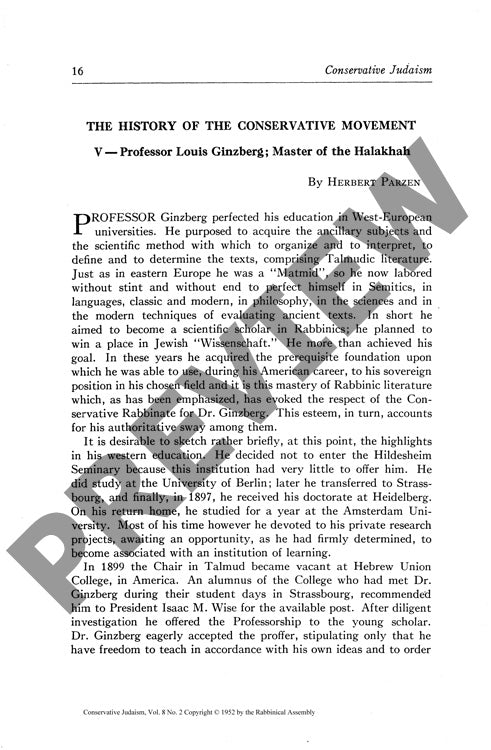The History of the Conservative Movement
Couldn't load pickup availability
Louis Ginzberg's towering influence over Conservative Judaism created an enduring paradox: while his scholarship demonstrated Judaism's historical adaptability, his personal conservatism effectively restrained the movement's practical evolution. Through biographical analysis and examination of his scholarly works, this research traces how Ginzberg's unique intellectual formation - bridging Eastern European yeshivot and Western universities - shaped his approach to Halakhic scholarship and Jewish law. Detailed examination of his writings, Seminary teaching, and institutional leadership over five decades reveals Ginzberg as a master of the Historical School who positioned Halakhah as Judaism's central literary current while documenting its capacity for change. Yet a striking tension emerged between Ginzberg's theoretical recognition of Halakhic evolution and his reluctance to apply these principles to contemporary American Jewish life. His authoritative standing within the Conservative Rabbinate fostered a dualism between progressive theory and conservative practice, particularly in legal interpretation. His withdrawal from public engagement after 1922 profoundly impacted the movement's trajectory, with significant policy changes occurring only after his retirement from active teaching. While Ginzberg's scholarly eminence elevated respect for Halakhic tradition, it ultimately constrained the Conservative movement's ability to apply its own historical methodology to modern religious challenges.

More Information
-
Physical Description
-
Publication Information
Published 1952
ISBN
-
Publication Credits
Herbert Parzen

